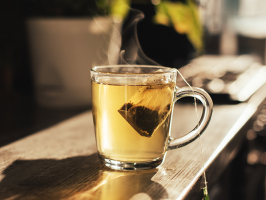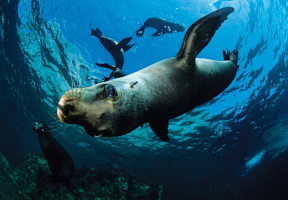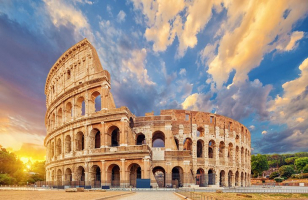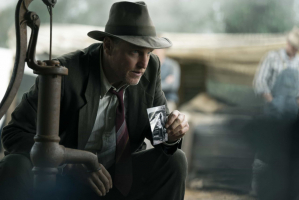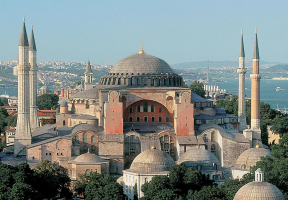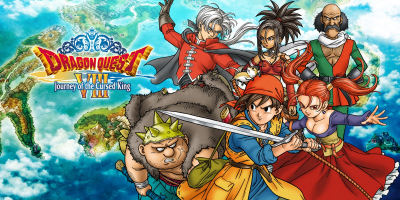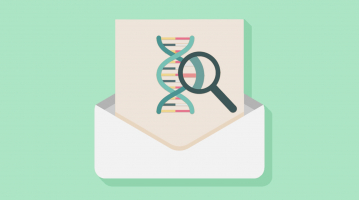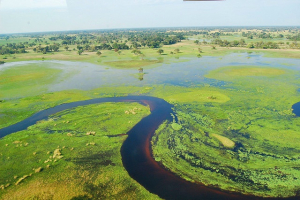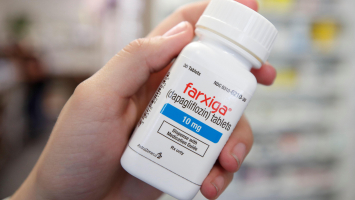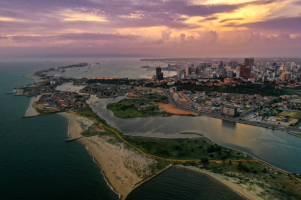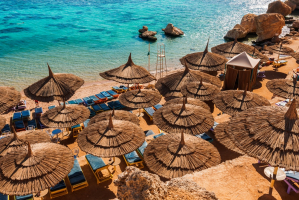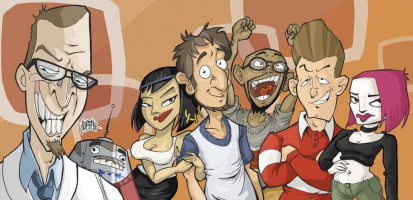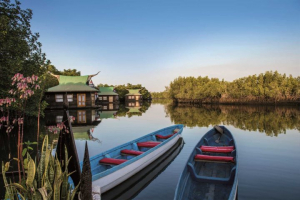Top 15 Things You Didn’t Know About Coffee
Coffee is a darkly colored, bitter, and slightly acidic drink that won over the hearts of many people all over the world. It is the most popular hot drink in ... read more...the world! In this list, we have some interesting facts that you might not know about this popular drink.
-
Coffee is consumed by many as they begin their day and several times throughout the day. Therefore, this beverage has become the second most consumed drink in the world, only after water. Coffee even manages to be the most popular drink in traditional tea drinking countries such as China and Japan. In fact, coffee is the second most exported commodity in the world (only after oil), and more than two billion cups of coffee are drunk every day.
Coffee is thought to be discovered in Ethiopia, then spread all over the globe. By the 15th century, coffee houses were common in many countries like Turkey, Persia, Syria, etc. Coffee came to Europe in the 16th century, then quickly spread throughout Europe. By the 17th century, London alone had more than 300 coffee houses! The amount of coffee being consumed also rises nonstop. According to World Population Review, the top 10 countries that drink the most coffee in the world(by 1000s of 60-lb bags of dry coffee beans consumed) are the US (27,310), Germany (8,670), Japan (7,551), France (6,192), Italy (5,469), Russia (4,820), the UK (3,770), Spain (3,253), Poland (2,501), Netherlands (2,030). The top coffee-producing countries globally surprisingly didn't make it to the top 10 list, they are Brazil, Vietnam, and Colombia.
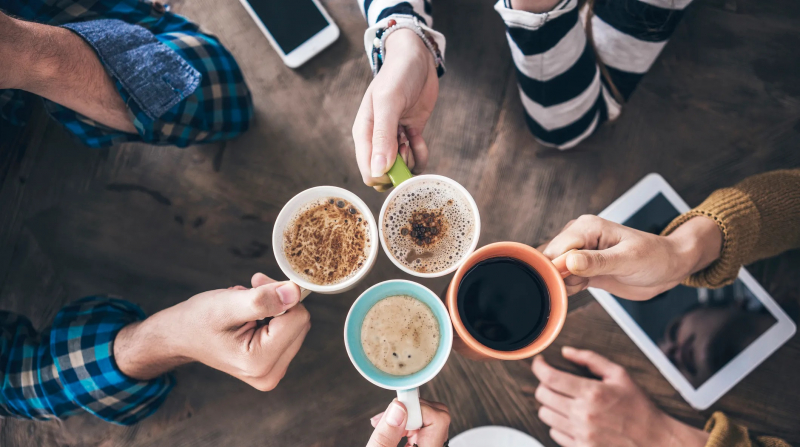
Photo: USA Today Video: ICOMM-EX -
Surprisingly, the world's biggest consumer of coffee on a per-person basis is not Brazil, not Vietnam, but Finland, with 12.5kg (28 lbs) per person consumed every year, which means the average Finn drinks nearly four cups a day. Per capita, Finn consumes more coffee than any other nation in the world. This drink is so popular in Finland, that two 10-minute coffee breaks are legally mandated for the people here.
So, why does Finn drink "that" much coffee in a day? One of the biggest reasons for this is the weather in Finland. In some parts of Finland, especially in the North, the temperatures dip as low as -40C, which is extremely cold, making the idea of drinking a cup of coffee to stay warm and energetic sound better than ever.
Despite being the world's biggest consumer of coffee on a per-person basis, Finland does not have lots of multinational coffee chains. You might find some Starbucks in the capital city of Helsinki, or in Finland's airports, but you will hardly find any in the street. The reason for this is that Finn has more than enough national chains, coffee houses, and even corner shops making pots of coffee throughout the country. This is in fact another reason that explains why this country's residents drink so much coffee every day.
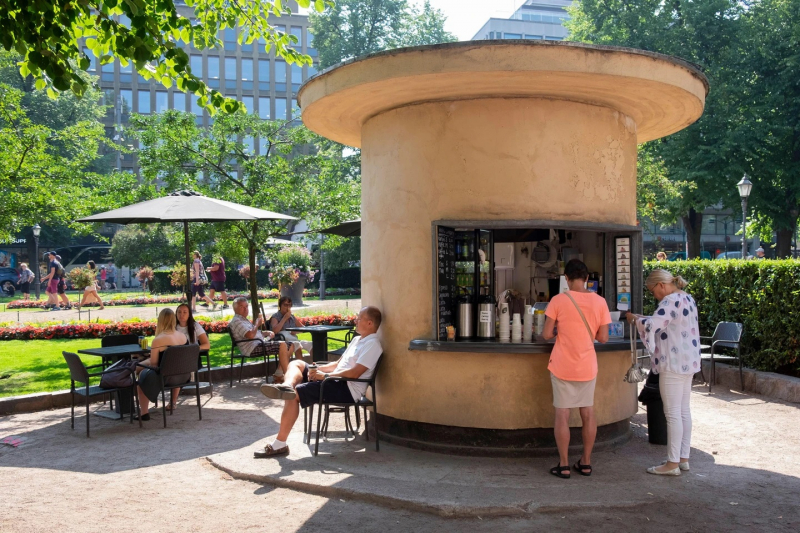
Photo: theculturetrip.com Video: Chico Muya -
There are more than 70 countries that produce coffee in the world, and Brazil leads those countries as the largest coffee producer in the world. In fact, this country has been the world’s largest coffee-producing country for more than 150 years! The amount of coffee produced in Brazil takes one-third of all the coffee produced worldwide, and it is almost double the amount of coffee in second-place Vietnam. In 2020, Brazil produced 3,558,000 metric tons (7,844,000,000 pounds) of coffee. Coffee beans produced in Brazil fall into 2 types: the arabica variety and the robusta variety.
So, what could be the factors that are behind this incredible number? There are approximately 3.5 million people who are involved in the coffee industry in Brazil. And coffee is planted in around 220,000 coffee farms, mostly in Minas Gerais (1.22 million hectares); Espírito Santo (433,000 hectares); São Paulo (216,000 hectares); Bahia (171,000 hectares); Rondônia (95,000 hectares); and Paraná (49,000 hectares). The overall area is about 10,000 square miles (27,000 sq km), which is almost the size of Belgium! One fact about these farms is that the coffee farms in Brazil are generally a lot flatter than in other countries, which provides the opportunity for stripping the plants using a machine.
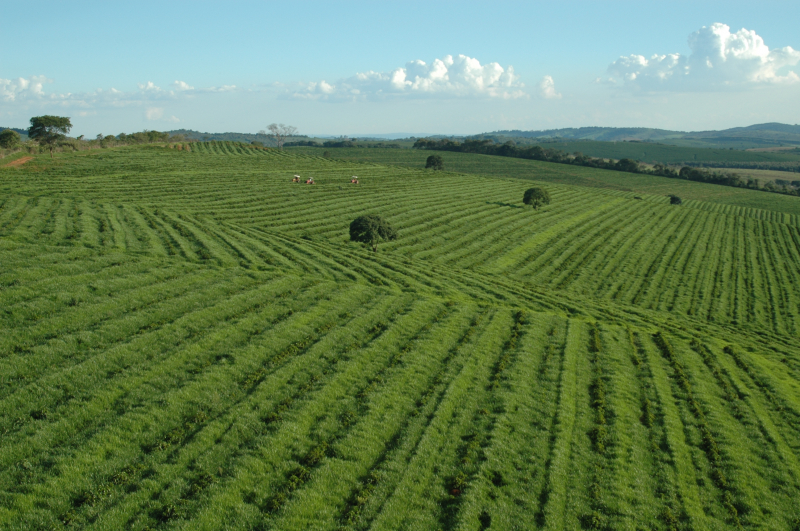
Coffee farm in Brazil - Wikipedia Video: Insider -
Since coffee is widely drunk all over the world, there are countless stories regarding coffee's origin. However, the most famous story is the Ethiopia legend about how an Ethiopian goat herder accidentally discovered coffee many years ago.
According to the legend, many years back, an Ethiopian goat herder named Kaldi took his goats to the strange berries forests on the Ethiopian Plateau, which were actually the ancient coffee forests. His goats eat a lot of berries from the trees, and they become so strangely energetic that they didn't even sleep that night. After noticing the strange effect that those berries have on his goats, he quickly reported to the local monastery. People in the local monastery tried to make berries into a drink and agreed with Lakdi that the drink did keep them awake throughout the long evening prayer. The news of coffee's powers spread like wildfire, reaching the Arabian Peninsula, Europe, New Amsterdam, New York, Britain, Arabia, France, America, and then the entire world.
As said above, there are many other legends about how coffee was discovered, one of them is a legend from Omar. The legend goes that a man who was deported from Mecca found the coffee berries on his journey out of Mecca. He then tried to roast and boil them to get rid of the bitter taste. After boiling, he had a brown, sweet-smelling liquid that strengthened him after he drink it. After this discovery, he was able to return to Mecca as a saint and continued to spread the news about coffee. Even though this legend is not as well-known as the legend from Ethiopia, it is thought to be more believable.
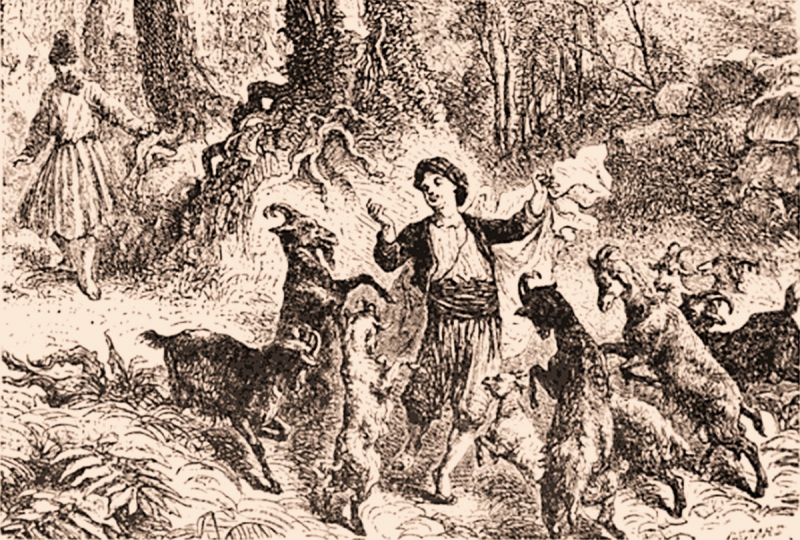
Kaldi and the Dancing Goats - Coffee Crossroads Video: Clayton Light -
Aside from keeping you awake and energetic throughout the day, drinking coffee brings you many other health benefits. Researchers find that drinking coffee can help you to lower the risk of heart failure, though further studies are needed to understand what processes may cause this to happen. Other studies show that by drinking coffee, you are less likely to develop depression or Alzheimer's disease. Most importantly, drinking coffee can reduce your risk of getting cancer. The reason for that is because caffeic acid and chlorogenic acid - the two chemicals found in coffee inflammation and exhibit antioxidant capacity. They increase the level of antioxidants in the body and decrease oxidative stress within cells, which can slow down and even prevent cell damage.
However, "more is more" doesn't apply to drinking coffee, as there are also lots of disadvantages to drinking too much coffee. The most common bad effect that people know about drinking too much coffee is, of course, sleep trouble. Following sleep trouble, you might have to face other bad effects including jitteriness, anxiety, and heart pounding. According to studies, you should drink no more than 4 cups a day. This is a safe number, though it is thought to be ideal if you consume 2 - 3 cups a day.
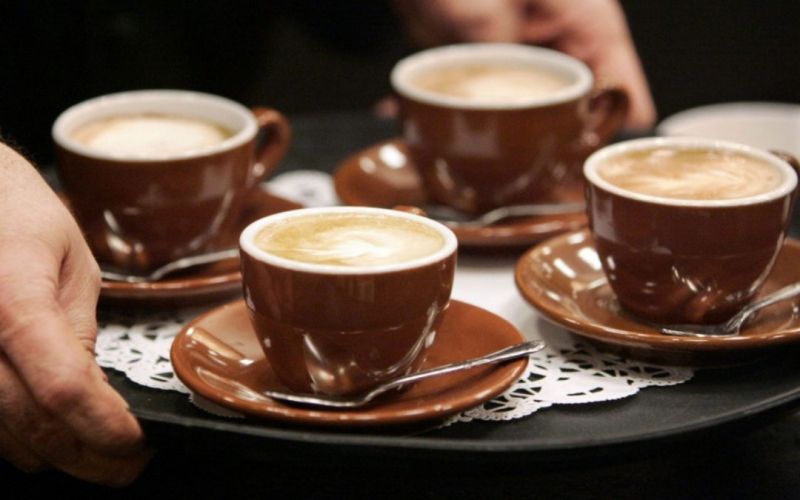
Photo: Prayas Group Video: Insider Science -
So many people associate their mornings with the smell of coffee brewing or a quick trip to the coffee shop. However, according to dietitians and nutritionists, the early morning might not be the most suitable time for a cup of coffee. According to their research, drinking coffee to start your day is not helping you, but hurting you, by tricking your body into producing more cortisol when your body already has cortisol as soon as you wake up.
If you drink a lot of coffee in the early morning, you'll see the result almost immediately. But it won't last long, because, by noon, your cortisol levels will drop dramatically, and you will feel lousy again. Therefore, it is best to drink coffee from around 9.30 am to 11.30 am and after lunch from around 1.30 pm to 3 pm when your cortisol levels are naturally low. However, you should avoid caffeine after 3 pm, because caffeine can disrupt your sleep up to six hours after consuming it, leading to an hour or more lost in rest. So, if you want to start living a life where you don't have to rely on coffee, you train yourself to go to bed at 9, and to be able to do that, avoid drinking coffee after 3 pm.
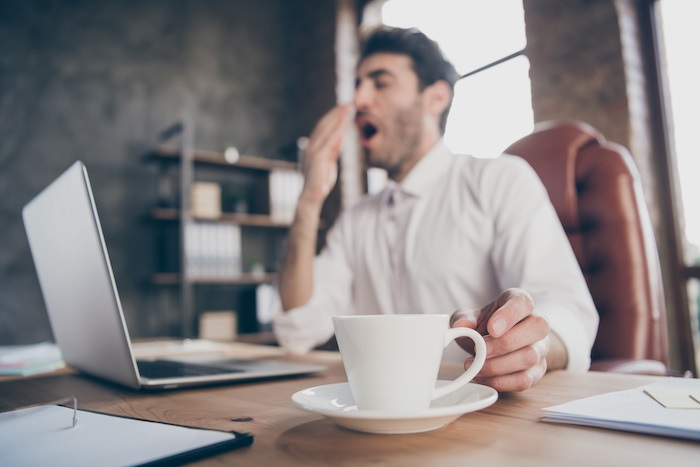
Photo: CPAP.com Video: b/60 -
Do you ever find yourself being more creative and efficient at the coffee shop? Obviously, the environment around you and your ability to create have a strong connection. And the coffee shops, actually have pretty much all the factors needed to boost your work efficiency and creativity to the fullest.
First of all, this has to do with how your brain works under soft environmental sounds. Recent research shows that a little bit of background noise/sound can boost your creativity rather than hinder it. We tend to pay less attention to background noises than we do to foreground noises, and therefore, there is more mental processing power left over for other tasks. So, under environments that have sounds/noises like that, your brain can function faster and helps you to think outside the box by increasing openness and encouraging a flexible mindset.
Coffee shops always have calming background music, with the sound of people making coffee, talking to each other at a small volume, or the sound of staff cleaning up a table, etc. Those are the mix of sounds that help give you a brain boost. Therefore, if you are ever stuck on a problem, try going to a coffee shop nearby, or simply put on some white noises you can find on youtube.
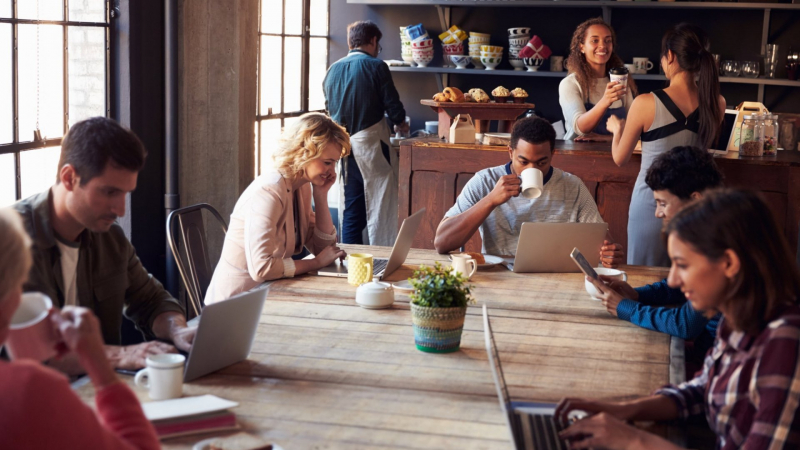
Photo: Inc. Magazine Video: James Taylor -
While coffee is widely known to be a drink, it is also one of an ingredient that you can use for cooking. Coffee is not one of the 14 major food allergens, it also has a naturally bold, bitter flavor that enhances the richness of red meats and pork, that's why there are a lot of recipes out there that have coffee in them. In fact, before learning how to brew coffee, east African tribes mixed coffee berries with animal fat and consumed it as food.
Most recipes use strongly brewed coffee, and unless the instructions specify hot coffee, allow the brew to cool to room temperature before using it in your dishes. You can use coffee in pretty much any stage to cook, from coffee beans to coffee grounds. There are some tips for using coffee in your cooking, such as a bold French roast with a sauce that has coffee will give beef a deep, rich flavor, etc. You can get all creative with your coffee in the kitchen, but here we have 10 examples of meals, snacks, and treats you can make using coffee: Coffee baked beans, Coffee cake, Coffee mole, Coffee ice cream, Coffee-rubbed steak, Tiramisu, Coffee beef stew, Coffee crème caramel.
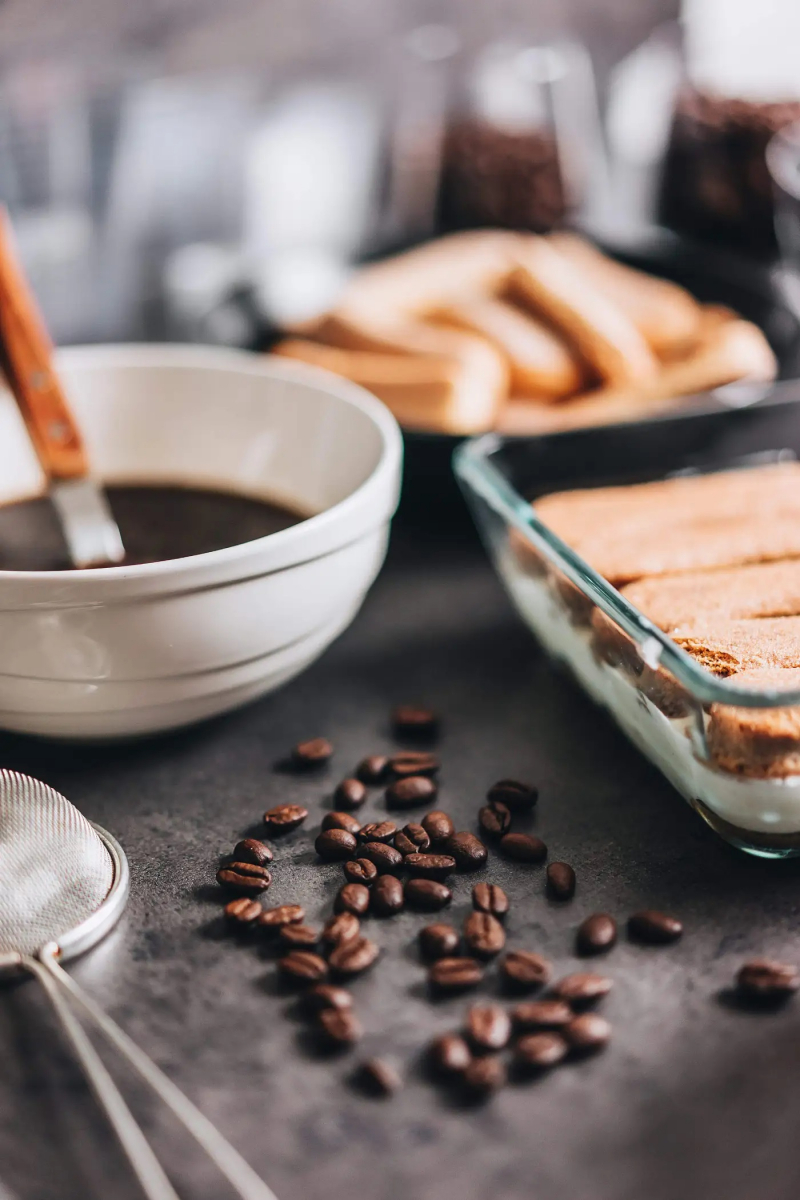
Photo: thequeenbeandotblog.files.wordpress.com 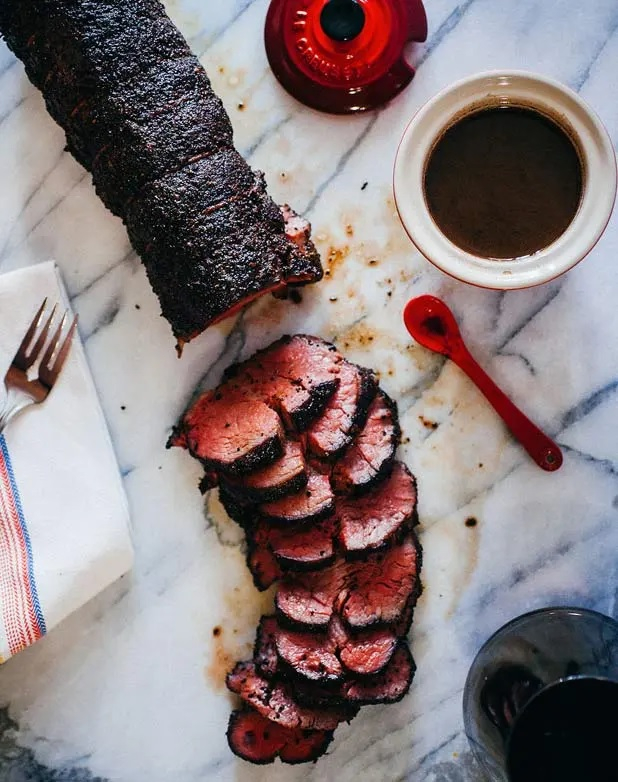
Beef coocked with coffee - PureWow -
Lots of people need coffee to stay energetic throughout the day, including astronauts who work in space. The idea of brewing and drinking hot coffee in space might sound impossible for most people, and some have even argued that it might be better to just not have coffee on a space mission. But many astronauts disagree, as they have been drinking coffee in space since 2000. However, the experience is quite uneasy, and the taste of coffee in space is also not of the highest quality.
Astronauts travel into space with instant coffee in an airtight pouch. The process of brewing coffee in space is tightly controlled since liquids and dust particles leaked from the brewing process can find their way into important machines and circuitry on space shuttles and stations, which can lead to great catastrophic damages. However, in recent years, new techniques that allow astronauts to make their own coffee however they want and whenever they want have been designed by Rice University. Following Rice University, many other Universities and Research Institutes have been working on finding new and better ways to brew coffee in space, making it easier for astronauts to make and enjoy their coffee now than ever.
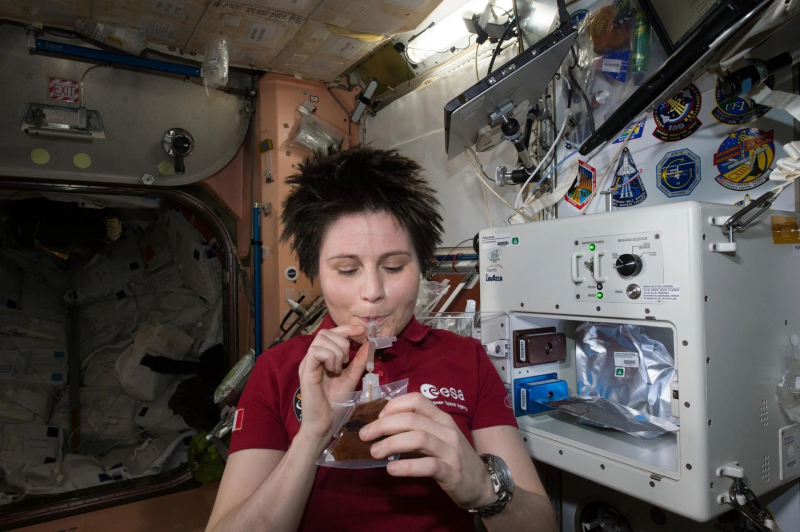
An astronauts drink coffee in space - StarTrek.com Video: Be Smart -
Nowadays, coffee is the most popular hot drink in the world and has been proven to have many good health effects on the human body. But there was a time in history that coffee was banned, and people who drink coffee were punished by death. This was the year 1633 when the Ottoman sultan Murad IV absolutely forbade an activity he believed was the cause of social decay and disunity in his capital Istanbul. Specifically, he thought that coffee shops could damage social norms, encourage dangerous thoughts or stimulate other terrible things.
It seems that his childhood is the main reason why Murad IV hates coffee so much. After his brother and uncle were brutally murdered by a military group of janissaries, Murad IV lives in fear of janissary rebellions. After finding out that janissaries usually go to coffee shops, and used them to plot coups, he imposed the death penalty on coffee, public tobacco, and opium consumption and even closed taverns. The nonsense was that Murad IV himself never banned coffee wholesale, as well as kept on drinking coffee and liquor. Even after Murad IV's death, his successors continued his policies for over a decade. By the mid-1650s, all the coffee houses in Istanbul were still empty and life-less because of these ignorant policies.
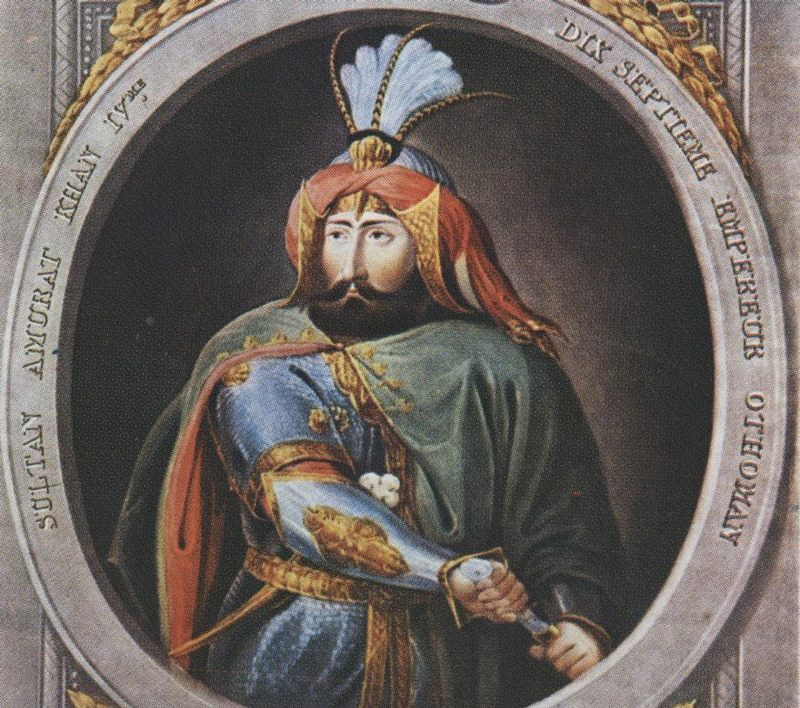
Ottoman Sultan Murad IV - www.atlasobscura.com 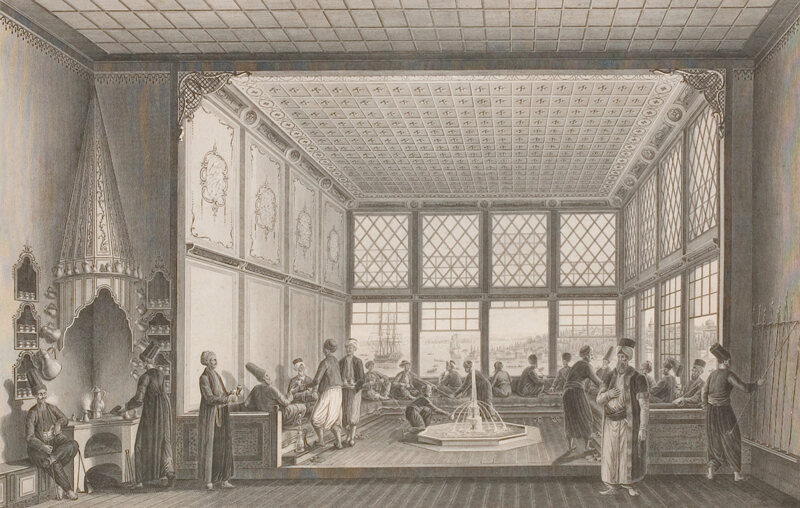
A coffee house in Istanbul before Murad's policies - Atlas Obscura -
Nowadays, American loves coffee! We can clearly see that by looking at the number of coffee drinkers and coffee shops in the US. According to WGRZ, over 60% of New Yorkers are coffee drinkers and, 60% of them drink more than one cup every day. Even on an island of less than 23 square miles - MaManhattan, there are currently 240 Starbucks shops! However, the popularity of this drink did not start if there was not a series of events called "The Boston Tea Party".
Prior to these events, the majority of American colonialists were tea drinkers, as the British drank tea, and they import mostly tea to America. However, in 1773, after the British placed heavy taxes on tea, the Americans had a negative reaction toward this beverage and organized several events known as "The Boston Tea Party" to protest against the tax. One of the biggest protests of The Boston Tea Party occurred when hundreds of imported chests of tea were thrown into the sea. Stopped drinking tea, Americans started to drink coffee, and this drink has gained popularity ever since. To this day, it became known that The Boston Tea Party is one of the most impactful political protests in history.
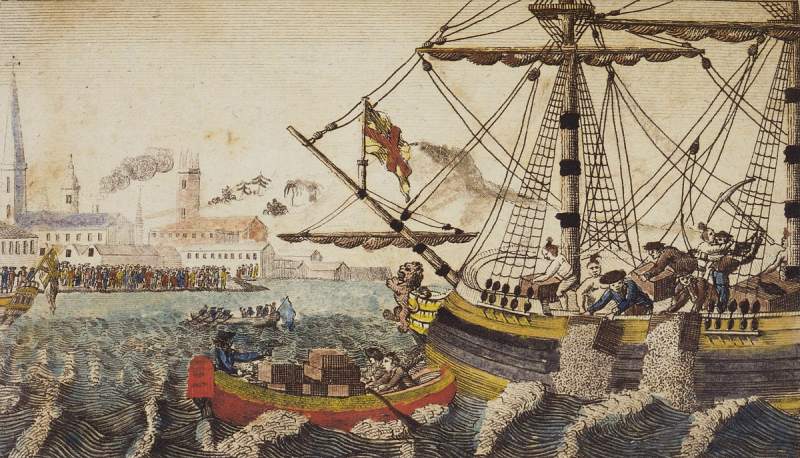
Photo: Wikipedia Video: TED-Ed -
The oldest coffee house in the world is believed to be the Café Le Procope, which is a coffee house established in the year 1686 and lies on the 6th arrondissement of the street rue de l’Ancienne Comédie, Paris, France. It is thought that coffee was first introduced to Parisians in the year 1675 by Jean de Thevenot (A French traveler). However, Parisians only got to know about the wonderful taste and effects of coffee after Café Le Procope opened.
This coffee house is the first of its kind. Café Le Procope is also famous for hosting revolutionaries and intellectuals such as Marie Antoinette, Victor Hugo, Thomas Jefferson, and Benjamin Franklin. It became the hub of artistic and the literary community of Paris in the 18th and 19th centuries. However, this coffee house also experienced lows in its long life. After the French Revolution, Café Le Procope sank to the level of an ordinary restaurant and had to be closed in the 1870s. But during the 1900s, having a new owner, the coffee house is reopened and refurbished in an 18th-century style and got its prestige back.
Nowadays, Café Le Procope is one of the most visited spots in Paris, France. Visiting this coffee house, you'll see the carpeted white-marble staircase, white linen tablecloths, and the chairs in upholstered brown leather that show the coffee culture of the people here that has been around for many years before. The outdoor and terrace seating comes with the classic promise of cobbled seats, showing a complete vintage aura of a Parisian street.
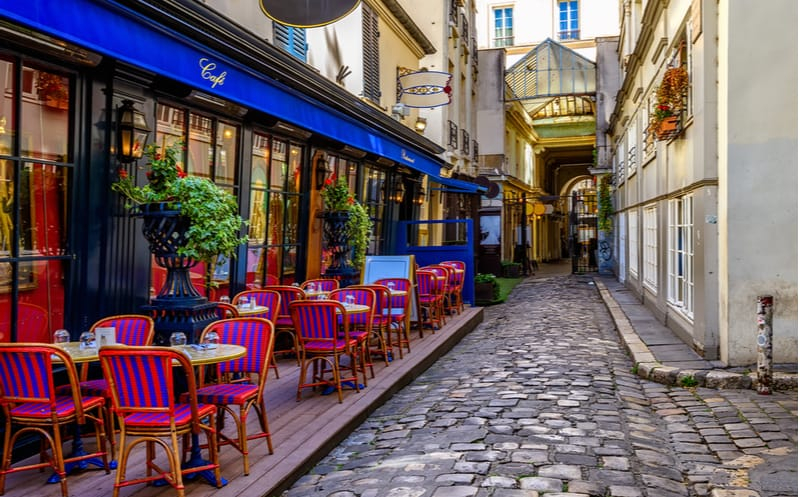
Photo: Vivre Paris Video: carandtrain -
As coffee is the most popular hot drink in the world, instant coffee should be one of the greatest inventions of all time! With instant coffee, people need no time to prepare a hot cup of coffee: Just by adding hot water to the coffee powder, then adding sugar or milk of your choice, you will have the perfect cup of coffee to boost your energy. Advantages of instant coffee also include lower shipping weight than beans or ground coffee, and long shelf life. It also reduces cleanup, and lowers environmental footprint!
The first instant coffee is called the “coffee compound”, made in Britain in 1771. This invention didn't make it in the US until 1851 when the first American instant coffee was created. The purpose of instant coffee then was to be served in the army to soldiers during the American Civil War. However, the first successful method of creating a stable soluble coffee powder was invented by Japanese-American chemist Satori Kato in 1901. Following Kento's invention, George Constant Louis Washington, an American inventor made the first commercial brand of instant coffee in 1910.
After that, Nescafé spray-dried coffee arrived in 1938, and freeze-dried coffee - the type of coffee that you'll most commonly find on shelves today, has been around since the 1960s. This type of instant coffee was invented by Nestle.
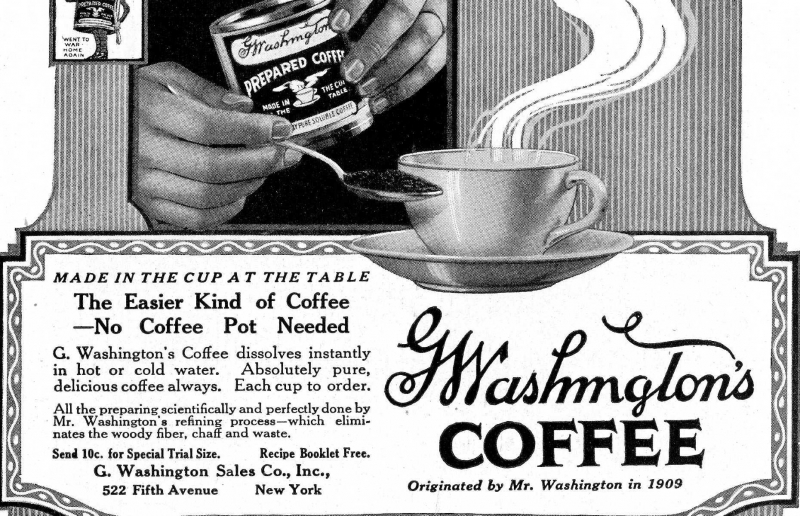
An instant coffee ad in 1909 - www.lovefood.com 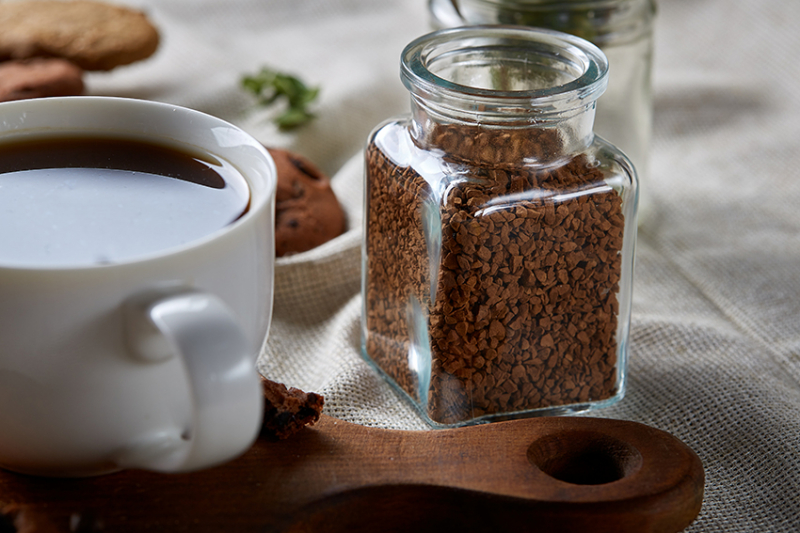
Photo: siccadania.com -
Climate change and its negative effects are rising every day, and it is threatening every aspect of our life, including the drink we love the most - coffee. According to research and studies, climate change will make it much harder to grow Arabica coffee in the coming years. The countries that now produce the most coffee, which are Brazil, Vietnam, Indonesia, and Colombia, also will have to face many harsh conditions due to climate change, as higher temperatures make it harder to grow coffee. Specifically, Brazil is predicted to lose 25% of its suitable land for growing coffee by the year 2050.
Specific temperature, light, and humidity levels are required in the process of growing coffee. However, climate change experts say that global temperatures will continue to rise, and the temperature could be 1.5ºC or 4.5ºC higher in the hottest months, resulting in longer and more extreme periods of rain and drought. This will for sure has many negative effects on coffee, including the reduction of suitable area for growing coffee by up to 50% by 2050. Many studies have confirmed this, by stating that coffee is “proved to be most vulnerable, with negative climate impacts dominating in all main producing regions”.
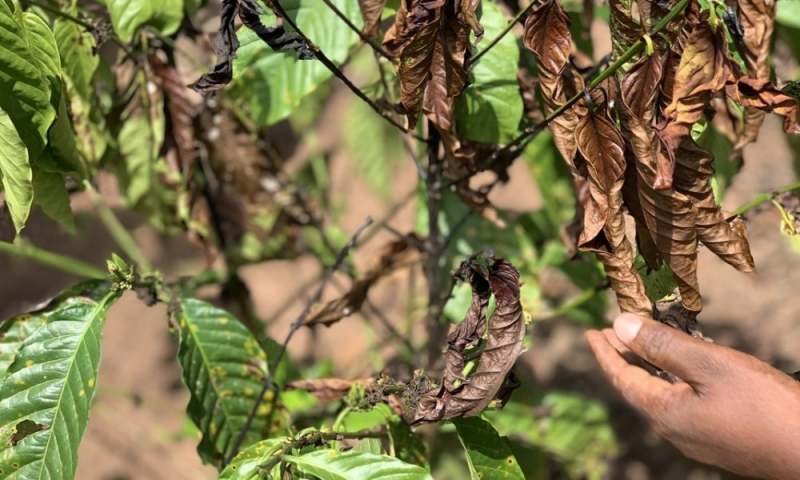
Photo: coffeeandclimate.org Video: CFR Education -
This might sound unbelievable and kind of gross, but coffee beans pooped out by cats are a thing, and it is in fact the most exclusive and expensive coffee in the world. This type of coffee is called "Kopi Luwak", and one kilogram of it can cause you up to US $1300.
The people in Indonesia on the islands of Java, Bali, and Sumatra, and some other South East Asian countries like Vietnam has been making Kopi Luwak for a long time. After finding out that the coffee fermented by the digestion of a type of wild cat named palm civet tasted exceptionally good, the people in these areas started to let the cats eat their coffee beans. They then use their poop which is coffee beans pooped out whole, to make coffee that is now the most expensive type of coffee in the world. If you worry that Kopi Luwak is not clean, remember that the outer layer of the coffee bean is removed during processing and the remaining beans are completely cleaned before being roasted and sent to you!
The taste of Kopi Luwak is noticeably not bitter and is intensely aromatic. It has a complex flavor profile that is smooth, earthy, and sweet with a hint of chocolate. Aside from the great taste, the uncommon method of production and the limited availability makes Kopi Luwak extremely expensive. However, due to the popularity of Kopi Luwak, several plantations farm have been raising palm civet cats, sometimes in deplorable conditions, to produce Kopi Luwak. This is a highly inhumane process that's not only unacceptable but also inefficient because the civets' digestive system is usually wrecked from being forced to have an unbalanced diet.
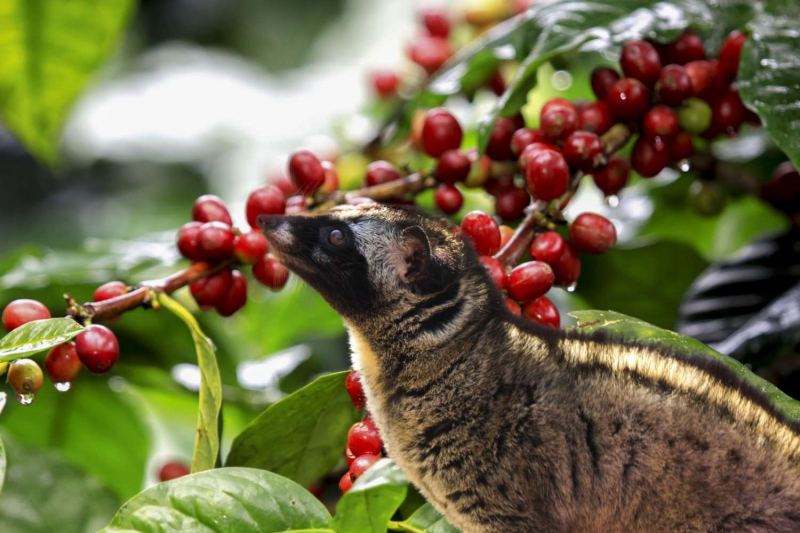
The Asian palm civet cat - ArtOn Café Video: WildCiencias

















